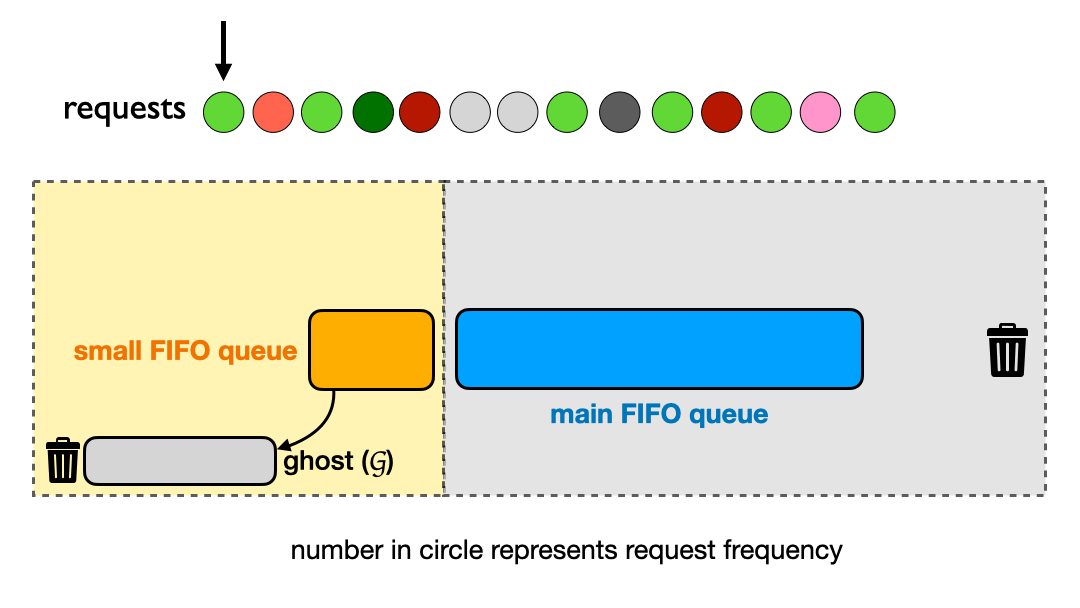S3-FIFO
Scalable and Efficient Cache Eviction
Efficient: up to 72% lower miss ratio than LRU
Robust: evaluated on 6594 workloads from 12 companies
Scalable: NO locking
Simple: FIFO queues only
Flash-friendly: sequential writes only
* appear in SOSP'23
How does S3-FIFO work?
Simple and Scalable caching with three Static FIFO queues

How good is S3-FIFO?
S3-FIFO reduces your LRU cache size by 46% and improves the throughput by 6x
* target miss ratio 10%, 16 threads
How to use
from cachemonCache import S3FIFO
# Create a cache backed by DRAM
cache = S3FIFO(size=10) # or cache=LRU(size=10)
# Add an object to the cache
cache.put("key", "value", ttl=10)
# Get an object from the cache
cache.get("key")
print(value) # Outputs: "value" or None
# Remove an object from the cache
cache.delete("key")
# Check if an object is in the cache
cache.has("key")
print(exists) # Outputs: False
const { S3FIFO } = require('cachemonCache');
// Create a cache backed by DRAM
const cache = new S3FIFO({ size: 10 });
// Add an object to the cache
cache.put("key", "value", { ttl: 10 });
// Get an object from the cache
const value = cache.get("key");
console.log(value); // Outputs: "value"
// Remove an object from the cache
cache.delete("key");
// Check if an object is in the cache
const exists = cache.has("key");
console.log(exists); // Outputs: false
More languages to come!
Contact us if you're interested
Why does S3-FIFO work?
A huge number of objects accessed once (called one-hit wonders) calling for quick demotion:
S3-FIFO quickly removes objects that will not be accessed in the future
Figure shows that most of the objects evicted by LRU spend long time in the cache without reuse.
Adoption
Google, VMware, Redpanda, Cloudflare, Risingwave, Deep Graph Library, MatrixOne, and uap-python,
mulitple large open-source libraries, such as otter (Golang), surrealkv (Rust), quick-cache (Rust), spica (Javascript), foyer (Rust),
and many other cache libraries in Golang [1], [2], Python [1], Rust [1], [2], [3], [4], C++ [1], [2], Java [1], [2], Zig [1], Javascript [1].
Discussed in Aleksey's Online Reading Group, UIUC CS525.
Covered in blog [1], [2], [3], [4] in Korean, [5] in Japanese, [6] in Russian, newsletters [1], [2], conference in Korea, [2]
let us know if you would like to be featured here.
Acknowledgement
Sponsors:
Carnegie Mellon University Parallel Data Laboratory Emory University SimBioSys Lab
Meta, Google Cloud, AWS, Microsoft Azure, CloudLab, Sloan Foundation VMware, and NSF
Dataset source:
Twitter, Meta, Tencent, Microsoft, Wikimedia, CloudPhysics
Contact Us